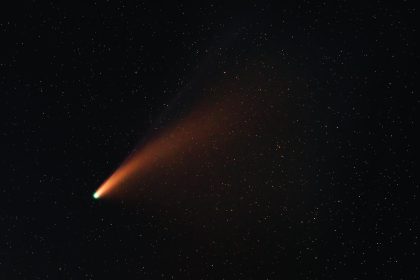Historical Science: 5 Breakthroughs Unearthing Our Ancient Past
Historical Science: 5 Breakthroughs Unearthing Our Ancient Past
Historical Science: 5 Breakthroughs Unearthing Our Ancient Past
The echoes of the past whisper to us through ancient ruins, forgotten texts, and the very landscape beneath our feet. But how do we truly hear their stories, decipher their secrets, and understand the lives of those who came before? This is where Historical Science steps in, transforming speculation into evidence and bringing the distant past into sharp focus. Far from mere storytelling, it employs rigorous scientific methodologies to reconstruct vanished worlds, offering unparalleled insights into human history and the planet’s evolution.
What is Historical Science? Unpacking Its Core Disciplines
Historical Science represents a powerful interdisciplinary field, applying scientific principles and techniques to the study of the past. It bridges the gap between traditional historical narratives and empirical scientific inquiry, providing tangible data to support, refute, or expand our understanding of ancient times. Unlike history, which often relies on written records, historical science can illuminate periods long before writing existed or where records are scarce.
Key disciplines contributing to this vibrant field include:
- Archaeology: The study of human history and prehistory through the excavation of sites and the analysis of artifacts and other physical remains.
- Paleontology: Focusing on the history of life on Earth through the fossil record, revealing ancient ecosystems and evolutionary pathways.
- Historical Geology: Investigating the physical history of Earth, including its crust, oceans, and atmosphere, over geological time scales.
- Dendrochronology: Dating events and environmental changes by studying tree ring patterns.
- Archaeozoology and Archaeobotany: Analyzing animal bones and plant remains from archaeological sites to understand ancient diets, environments, and human-animal interactions.
The Scientific Method at the Heart of Historical Research
At its core, all historical scientific inquiry adheres to the principles of the scientific method. Researchers observe historical phenomena or artifacts, formulate hypotheses about their origin or function, collect data through excavation or analysis, and then critically evaluate this evidence. This rigorous process ensures that conclusions are based on verifiable data rather than conjecture.
For instance, an archaeologist might hypothesize about the diet of an ancient population. They would then collect skeletal remains, analyze stable isotopes in bone collagen, and examine plant and animal remains from waste pits. The resulting data, such as isotopic signatures or specific plant pollens, would either support or challenge their initial hypothesis, leading to a refined understanding of ancient sustenance.
Unveiling Ancient Worlds: Breakthroughs from Historical Science
The application of scientific methods has led to profound discoveries, reshaping our understanding of global history and local narratives.
The Graveyard of the Atlantic: Marine Archaeology’s Deep Insights
Off the coast of North Carolina lies the “Graveyard of the Atlantic,” a testament to centuries of maritime activity and natural forces. Marine archaeology, a crucial branch of Historical Science, employs sonar, remotely operated vehicles (ROVs), and meticulous underwater excavation to study shipwrecks. These submerged time capsules offer unparalleled glimpses into past technologies, trade routes, daily life at sea, and the environmental conditions of their sinking.
Analysis of timbers, cargo, and personal effects provides data on ship construction, global commerce, and even the social status of passengers. These scientific investigations not only preserve cultural heritage but also inform our understanding of coastal erosion and marine ecosystems over time. For more information on marine archaeology, explore resources from the Smithsonian Ocean.
Indigenous Connections: Reconnecting Through Historical Ecology
For Indigenous peoples, reconnecting with ancestral lands and traditions is often deeply informed by historical ecology. This field scientifically examines the long-term interactions between human societies and their natural environments. By analyzing lake sediment cores for pollen and charcoal, studying ancient DNA from plant and animal remains, and interpreting oral traditions through an ecological lens, scientists and communities can reconstruct past landscapes and resource management practices.
Understanding how Indigenous communities sustainably managed rivers, forests, and coastal areas for millennia offers invaluable lessons for contemporary conservation. This scientific approach empowers communities to reclaim narratives and advocate for land stewardship based on deep historical and ecological knowledge.
Tools and Techniques Shaping Historical Science Today
Modern advances provide an ever-expanding toolkit for historical scientists.
Dating Methods: Precision in Time
Accurate dating is fundamental to understanding the sequence of historical events. Critical scientific dating techniques include:
- Radiocarbon Dating (Carbon-14): Used for organic materials up to 50,000 years old, measuring the decay of radioactive carbon isotopes.
- Dendrochronology: Analyzing tree rings for precise dating, often calibrated with radiocarbon dates, providing annual resolution.
- Luminescence Dating: Measures the light emitted from minerals (like quartz and feldspar) as they are heated, revealing when they were last exposed to sunlight or heat, applicable to sediments and ceramics.
Material Analysis: Unlocking Secrets of Artifacts
Non-destructive and minimally destructive analytical techniques allow scientists to extract vast amounts of information from artifacts without damaging them.
- X-ray Fluorescence (XRF): Identifies elemental composition, revealing the raw materials and provenance of metals, ceramics, and obsidian.
- Scanning Electron Microscopy (SEM): Provides high-resolution images of surfaces, showing manufacturing techniques, wear patterns, and microscopic details.
- Isotopic Analysis: Studying stable isotopes (e.g., oxygen, nitrogen, carbon) in bones, teeth, and plant remains to reconstruct ancient diets, migration patterns, and climate.
Digital Humanities and GIS: Mapping the Past
Geographic Information Systems (GIS) allow historical scientists to map and analyze spatial data, from ancient settlement patterns to trade routes. Digital humanities leverage computational tools to analyze vast historical texts, identify patterns, and visualize complex relationships, enhancing our interpretive capabilities.
The Future of Historical Science: Innovation and Discovery
The field continues to evolve rapidly. Artificial intelligence and machine learning are increasingly used to process vast datasets, identify subtle patterns, and even predict archaeological site locations. Advanced imaging techniques, like ground-penetrating radar (GPR) and LiDAR, allow for non-invasive mapping of subsurface features, revolutionizing site discovery. The future promises even greater collaboration across disciplines, fostering a holistic understanding of our shared past.
Historical Science is more than just academic pursuit; it’s a vital tool for understanding our origins, informing our present, and shaping our future. By diligently applying scientific rigor to historical questions, we continue to unearth astounding truths about human resilience, ingenuity, and our profound connection to the natural world. Ready to delve deeper into the fascinating world of the past? Explore the rich history and scientific endeavors at the National Geographic website.
© 2025 thebossmind.com
Excerpt: Dive into Historical Science! Discover how cutting-edge methods reveal lost civilizations, ancient environments, and human stories. Explore archaeology, dating, and more.
Image search value for featured image: Historical Science archaeology ancient artifacts scientific discovery marine archaeology indigenous history
URL Slug: historical-science
Political Power: Unveiling 5 Key Secrets of Influence & Impact
Political Power: Unveiling 5 Key Secrets of Influence & Impact political Political…
Quantum computing is still an experimental technology. But Google’s new algorithm, Quantum Echoes, shows that scientists are rapidly improving techniques that could allow quantum computers to crack scientific problems no traditional computing device ever …
Quantum Computing's Leap: Google's Algorithm Cracks New Frontiers Quantum Computing's Leap: Google's…
Quantum computing is still an experimental technology. But Google’s new algorithm, Quantum Echoes, shows that scientists are rapidly improving techniques that could allow quantum computers to crack scientific problems no traditional computing device ever …
Quantum computing is still an experimental technology. But Google's new algorithm, Quantum…
AI Deciphers Ancient Finger Markings
AI Unlocks Ancient Finger Art Secrets AI Deciphers Ancient Finger Markings AI…
US Venezuela Policy: Echoes of Past Actions?
Recent US military actions against drug-trafficking boats tied to Venezuela, authorized by…
Historical Echoes: US Intervention in Latin America
### Pre-Writing Analysis: Outline Generation Historical Echoes: US Intervention in Latin America…
Venezuela: US Intervention Echoes Past Latin American History
### Suggested URL Slug venezuela-us-intervention-history ### SEO Title Venezuela: US Intervention Echoes…
US Intervention in Venezuela: A Look Back
# Outline Generation US Intervention in Venezuela: A Look Back Echoes of…
Early Universe Signals: Decoding Cosmic Whispers
Dive into the mysteries of the early universe and discover how astronomers…



